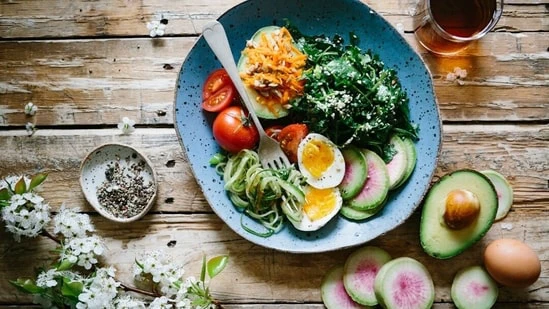Many people fall short of meeting their daily nutrient requirements without even realising it – missing out on essential vitamins, antioxidants, and healthy fats that keep the body functioning at its best.
A balanced diet isn’t about rigid rules but about giving your body the full spectrum of nutrients it needs to support energy, immunity, and long-term health.
Dr Kunal Sood, an anesthesiologist and interventional pain medicine physician, has outlined key food sources to include in your diet to build healthier eating habits. In an Instagram video posted on November 19, the physician explains why these nutrients are vital for the body’s proper functioning and emphasises the importance of balancing nutrition with mindful portion control.
Leafy greens for vitamins
According to Dr Sood, eating green leafy vegetables is essential for maintaining regular vitamin intake, as they are rich in several key nutrients. He explains, “Spinach, kale, and Swiss chard are packed with vitamins A, C, K, B-complex, fibre, and potassium. Regular intake is linked to lower risks of heart disease and stroke, making them nutrient-dense and low in calories.”
Nuts and seeds for healthy fats
The doctor notes that nuts and seeds like almonds, walnuts, flaxseeds and chia seeds provide healthy unsaturated fats that are essential for optimal heart and brain function. He explains, “Their plant omega-3s, fibre, and minerals help improve lipid balance and reduce inflammation.”
Colourful fruits for antioxidants
Dr Sood notes that the pigments in colourful fruits are packed with powerful antioxidants that support heart function and overall health. He highlights, “Fruits rich in carotenoids, flavonoids, and anthocyanins protect cells from oxidative stress. Eating a range of colours each day lowers the risk of cardiovascular disease and supports longevity.”
Mindful portion balance
Dr Sood stresses that rather than restricting foods, finding the right proportion matters more – paying attention to hunger and fullness cues helps build sustainable, guilt-free habits. He recommends, “Instead of restricting, aim for proportion: half vegetables and fruits, one-quarter whole grains, one-quarter lean protein, with healthy oils.”
He explains that combining leafy greens, nuts or seeds, colourful fruits, and mindful portions helps create a practical eating pattern that supports long-term wellbeing.
